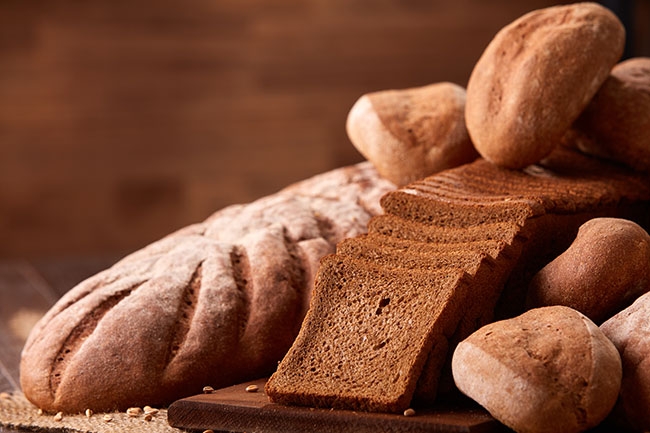
The Final Proof: Old meets new
June 27, 2017
By
Jane Dummer
Ingredient, nutrition trends emerge at Bakery Congress 2017
 Photo: Fotolia
Photo: FotoliaOne of the top trends at Bakery Congress was investing in research and development to create innovations to meet consumer demands for traditional-style bread and baked goods with modern conveniences, including extended freshness and moistness and improved taste, appearance and nutrition.
At the April show in Vancouver, Michel Dion, vice-president of Montreal-based Lallemand Inc., explained, “We are responding to requests from our direct customers and consumers to provide solutions with naturally occurring ingredients, including enzymes, bacteria and yeasts. At the Lallemand Research Centre, we are constantly experimenting with these ingredients to address current and emerging issues encountered by bakers. These include clean-label products, preservation of taste and flavour of baked foods, improved shelf-life and reduced product quality variation due to flour variability.”
Enzymes are natural proteins that catalyze biochemical reactions by bringing reactants together, rather than relying on the natural pace of a chance meeting of molecules. These innovative enzymes (that Dion referred to) facilitate the chemical reactions much faster with less energy that would normally be required. A May 2 article published on BakeryandSnacks.com reports that companies like Danish biotech firm Novozymes are investing in research to help meet changing consumer demands for bread with immediate freshness.
In the article, Novozymes vice-president Rasmus von Gottberg says, “Bread is undergoing resurgence, with the rise of artisanal and in-store bakeries: a bit like the craft beer movement. Consumers are demanding and will pay extra for quality and freshness. Our business is essentially about identifying relevant enzymes to achieve certain functionalities. It is our role to drive enzyme innovation for the baking industry. Take, for example, the quality of flour, which will vary from country to country. We have enzymatic solutions to modify or ‘correct’ the flour so that you can ensure consistent brand quality.”
While I was at the Bakery Congress, I met Philip Oxford, director of research and development at Puratos Canada, and was able to sample products made with his company’s Sapore softgrain. This is an ingredient solution that consists of grains infused in sapore, a wild bakery flavour based on natural fermentation.
“Based on the (re)emergence of fermented products, from micro-artisan brewery and spirits, to fermented teas, kimchi, and artisan cheeses, we have gathered sourdoughs from multiple regions around the world and we have built a sourdough library in the south of Belgium where we preserve over 80 sourdoughs,” Oxford says. “Consumers love whole grains, and the visual and textural impact of them drives consumer liking and purchase. By soaking the whole grains in sourdoughs, they take on the improved flavour and also superior tenderness.”
The rise in lifestyle diseases such as diabetes, as well as the increasing link between refined sugar and chronic diseases, has more North Americans seeking “smarter” carb options in the baking section.
Oxford explains, “Because the softgrains are made with whole grains and different seeds, it has additional nutritional value and health benefits; for example, B-complex vitamins, dietary fibres and proteins. Some ancient grains also included in sapore softgrain, such as teff and millet, are easily digested and have great taste and additional nutritional value. The softgrains have great versatility in application and are ready-to-use in recipes as diverse as breads, baguettes, laminated pastries such as croissants and sweet goods such as cookies and muffins.”
There can be technical challenges when it comes to using whole grains in a variety of applications. Oxford explains, “The softgrain can increase the freshness by increasing crumb moisture over shelf-life. Our result indicates that after seven days storage, the bread with softgrain have 40 per cent higher moisture than the control bread with dry grains. This can be attributed to the fully cooked grains which absorb the moisture during cooking and slowly release moist to crumb during storage.”
Overall, there are many beneficial opportunities including extended shelf-life and moistness, preservation of taste and flavour, enhanced nutrition and reduced product quality variation for bakers to use enzymatic and fermented solutions. There has been a great deal of progress in this area and companies including Lallemand, Puratos and Novozymes continue to research and develop solutions combining existing ingredients or creating new ones to get results to meet customer trends and demands.
Jane Dummer, RD (www.janedummer.com), known as the Pod to Plate Food Consultant, collaborates and partners with the food and nutrition industry across North America.
Print this page
Leave a Reply